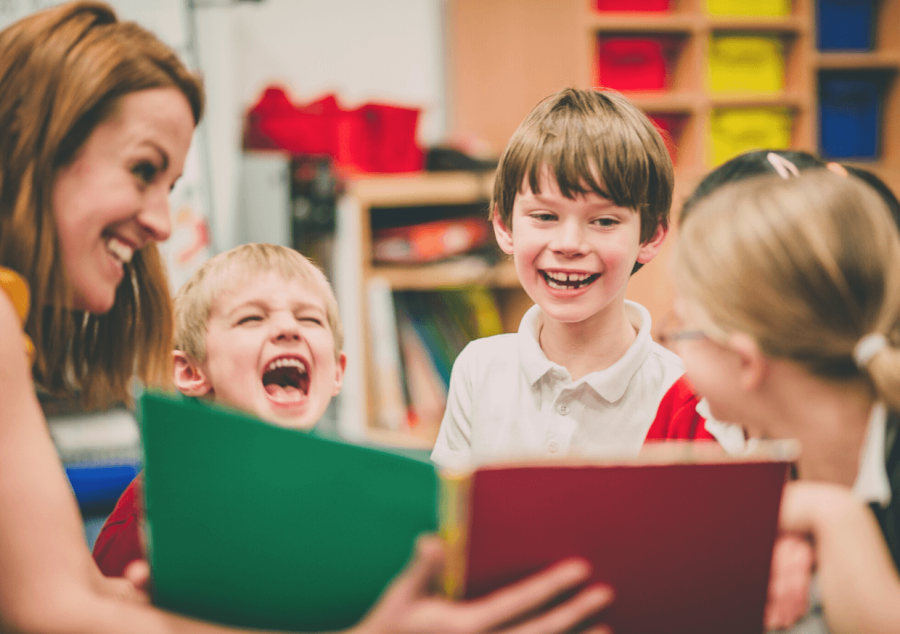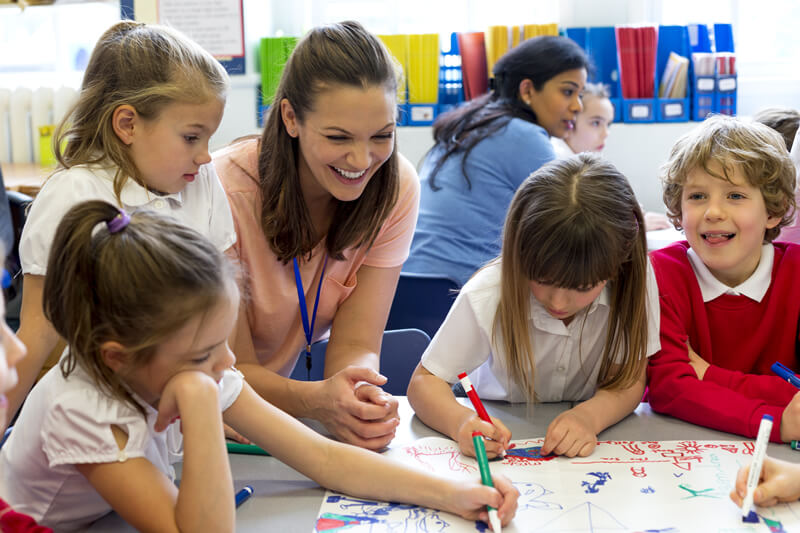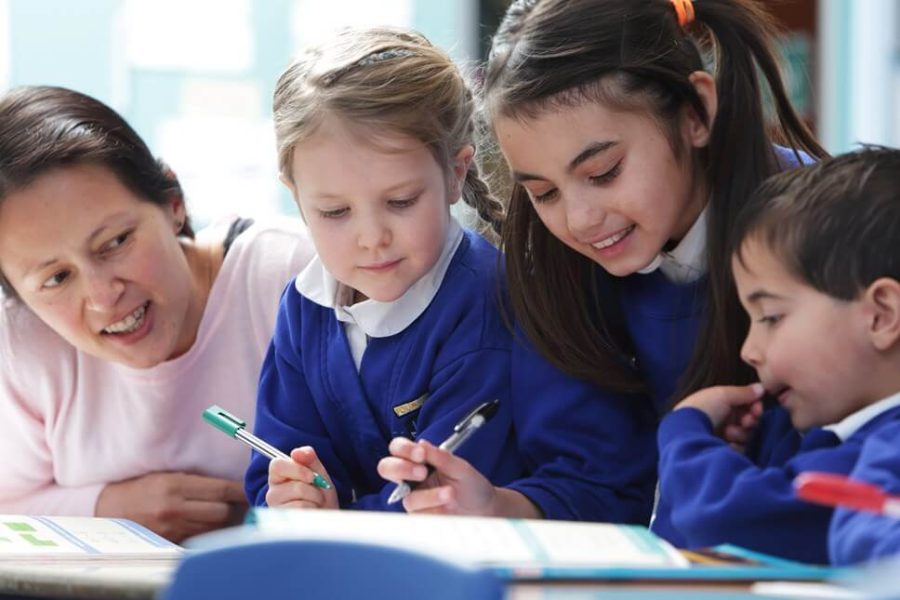Sending your child to school marks a significant milestone in their life and your own. Ensuring their safety is paramount, encompassing not just their physical well-being but also their emotional and psychological health. The importance of school safety cannot be overstated, as it directly impacts a child’s ability to learn, grow, and thrive. Here, we delve into the critical aspects of ensuring school safety, highlighting the measures that need to be in place and the specific features of ensuring safety in schools, particularly in the UAE, including institutions like City American School.
The Importance of Ensuring School Safety
Protecting Children’s Health
Schools have a fundamental obligation to protect the health of students. This involves adhering to safety protocols, maintaining a clean and safe environment, and being vigilant against potential health hazards. Regular health checks, clean facilities, and prompt medical attention are essential components of a healthy school environment.
Overcoming Difficulties
Part of the educational process is teaching children how to navigate and overcome difficulties. Schools should provide training and drills on emergency procedures, such as evacuations during fires or other threats, ensuring students know how to react without panicking. This preparedness helps build resilience and confidence in children, equipping them with life-saving skills.
Developing a Culture of Safety
Safety education is critical. Schools must instill in students a strong sense of personal safety, covering topics such as safe behavior, recognizing hazards, and understanding their rights. This education should aim to protect the individual’s life, health, rights, and freedoms, fostering a community where safety is a shared responsibility.
Creating Comfortable Conditions
A safe school environment is foundational to a comfortable and productive learning experience. Both students and teachers need to feel secure to focus on education. Teachers play a crucial role in maintaining this environment, setting examples, and enforcing safety rules consistently.

Basic School Safety Measures
Protection of the School and Adjacent Territory
Implementing access control systems is vital to protect children and staff from unauthorized individuals and potential threats. Schools should be enclosed with secure fencing, metal gates, and wickets equipped with reliable locking mechanisms to prevent unauthorized access.
Strengthening the School Building
The physical infrastructure of the school must be robust. This includes reinforced buildings, secure fences, and properly equipped entry and exit points. Security and fire alarm systems, video surveillance, and panic buttons are essential installations to ensure a quick response to any emergency.
Access Control System
Regulating who enters and exits the school premises is crucial. Only authorized personnel, students, and visitors with legitimate reasons should be allowed inside. This helps prevent unauthorized access and potential threats.
Fire and Electrical Safety
Schools must adhere to stringent fire and electrical safety standards. This involves regular inspections, maintaining clear evacuation routes, and conducting fire drills. Staff should be trained to respond promptly and effectively to fire emergencies.
Civil Defense Exercises and Training
Regular drills and training sessions for both students and staff are essential. These exercises prepare everyone to respond appropriately to various emergencies, such as fires, terrorist threats, or natural disasters, ensuring safety protocols are second nature.
Anti-Terrorist Security
Schools, in collaboration with municipal authorities and law enforcement, must have comprehensive anti-terrorist measures in place. This includes controlling access to the school grounds, protecting children and staff from aggressive actions, developing anti-terrorist security passports, and regularly inspecting compliance with safety regulations.
Installation of Metal Detectors
Metal detectors at school entrances serve as a deterrent against bringing weapons onto the premises. This measure significantly enhances the security of the school environment.
Educating Students About Safe Behavior
Education on safe behavior is a continuous process. Schools should provide students with knowledge about recognizing and reacting to potentially dangerous situations, ensuring they know how to protect themselves and others.
Reporting Suspected Attacks
Establishing a system for students to report suspected attacks or suspicious behavior is crucial. This can be facilitated through school websites or mobile applications, encouraging students to speak up about concerns without fear.
Role of Biometric Data
Biometric systems, such as fingerprint and facial recognition, can enhance school security. These technologies help monitor attendance, behavior, and access to various school facilities, ensuring accurate and secure student identification.

Features of Ensuring Safety in UAE Schools
Monitoring of School Buses
School buses in the UAE are equipped with advanced security and safety equipment, including GPS tracking systems. Chaperones monitor children on buses, and parents can track the bus route through dedicated applications, ensuring their child’s safety during transportation.
Notification System
Schools in the UAE have robust notification systems to inform parents about their child’s attendance and any absences promptly. By 9 am each day, the ministry is notified of student attendance, allowing for quick action if a child is missing.
Medical Centers
In the event of an incident at school, children are immediately taken to the hospital with their medical insurance details. This ensures they receive timely and appropriate medical attention.
Annual Inspections
The Public Transport Agency conducts annual inspections of school buses and service operators to ensure compliance with safety regulations. This includes verifying that drivers are properly licensed and buses are equipped with necessary safety features.
Engine Shutdown Buttons on Buses
To ensure no child is left behind, school buses have engine shutdown buttons located at the rear. Drivers must walk to the end of the bus to shut off the engine, ensuring they check all seats before locking the doors.
CCTV Cameras and Secure Entrances
CCTV cameras monitor school premises, and all entrances and exits are secured to prevent unauthorized access. Security guards at school gates ensure children do not leave the premises without proper authorization.
Licensed Drivers and Safety Protocols
Hiring unlicensed drivers for school transport is prohibited. Licensed drivers, familiar with all parents and authorized persons, are responsible for student safety during transportation.
Comprehensive Safety Agreements
Schools have agreements with universities to facilitate the automatic enrollment of graduates, ensuring a seamless transition from school to higher education.
Rigorous Safety Protocols
If someone other than a parent or regular guardian is picking up a child, schools require prior notification from a registered phone number. This ensures the safety of the child and prevents unauthorized pickups.
Regular School Bus Routes
School buses adhere to strict schedules, picking up and dropping off students at designated times and locations. An adult monitor on the bus ensures order and safety during the journey.
Additional Safety Measures
Schools may implement additional safety measures, such as temperature checks before entry, intensive cleaning programs, and regular health screenings, to maintain a safe and healthy environment.
Example of a Safe School in Ajman: City American School
City American School in Ajman exemplifies a safe school environment. It is equipped with CCTV cameras, GPS tracking systems in buses, access control doors, and follows stringent safety protocols. The tuition fee for grade 6 is 26,100 AED, reflecting the investment in a secure and nurturing environment for students.

Psychological Safety and Bullying Prevention
Creating a Bully-Free Environment
Schools must adopt zero-tolerance policies towards bullying. This involves training teachers to recognize and address bullying behaviors, providing support for victims, and creating an inclusive environment where all students feel respected and valued.
Counseling and Support Services
Access to counseling and psychological support is essential for students’ well-being. Schools should offer services where students can discuss their problems, seek advice, and receive emotional support from trained professionals.
Peer Support Programs
Implementing peer support programs can foster a sense of community and mutual support among students. Peer mentors can help new students acclimate to the school environment and provide a friendly ear for those facing challenges.
Cyberbullying Awareness
With the rise of digital communication, schools must educate students about the dangers of cyberbullying. This includes teaching responsible online behavior, recognizing signs of cyberbullying, and knowing how to report it.
Health and Hygiene
Regular Health Screenings
Regular health check-ups and screenings help detect potential health issues early. Schools should partner with healthcare providers to conduct periodic health assessments, including vision, hearing, and general health checks.
Hygiene Education
Educating students about good hygiene practices is vital to prevent the spread of illnesses. Schools should promote handwashing, proper use of sanitizers, and maintaining personal hygiene.
Clean and Safe Facilities
Maintaining clean school facilities is crucial for health and safety. This includes regular cleaning of classrooms, restrooms, cafeterias, and playgrounds. Proper waste disposal and pest control measures should also be in place.
Emergency Preparedness
Comprehensive Emergency Plans
Schools must have comprehensive emergency plans covering a range of scenarios, including natural disasters, medical emergencies, and security threats. These plans should be regularly reviewed and updated.
Regular Drills and Simulations
Conducting regular emergency drills and simulations ensures that both students and staff are prepared to respond quickly and effectively in an emergency. This includes fire drills, lockdown drills, and evacuation procedures.
Collaboration with Local Authorities
Schools should collaborate closely with local authorities, including police, fire departments, and medical services, to ensure coordinated responses during emergencies. Regular communication and joint training exercises can enhance preparedness.
Environmental Safety
Safe Playgrounds and Sports Facilities
Ensuring that playgrounds and sports facilities are safe for use is vital. This includes regular inspections, maintenance of equipment, and ensuring surfaces are free from hazards.
Safe Transportation
In addition to monitoring school buses, ensuring safe transportation includes providing crossing guards, clear signage, and safe walking routes for students. Encouraging carpooling and the use of bicycles can also enhance safety.
Community Involvement
Parental Involvement
Parents play a critical role in school safety. Schools should encourage parental involvement through regular communication, involvement in safety committees, and participation in school activities.
Community Partnerships
Building partnerships with local businesses, non-profits, and community organizations can enhance school safety. These partnerships can provide resources, support, and expertise to help create a safer school environment.
Volunteer Programs
Encouraging community members to volunteer at schools can provide additional support and supervision. Volunteers can assist with monitoring entrances, helping in classrooms, and supporting school events.
Technology and Innovation in School Safety
Advanced Security Systems
Incorporating advanced security systems, such as AI-powered surveillance and real-time monitoring, can significantly enhance school safety. These systems can detect and respond to potential threats quickly.
Mobile Safety Apps
Developing mobile apps for school safety can provide a direct line of communication between students, parents, and school administration. These apps can include features for reporting incidents, emergency alerts, and tracking student attendance.
Smart Classroom Solutions
Smart classroom solutions, such as automated attendance systems and secure access to digital resources, can streamline operations and enhance security. These technologies also ensure that only authorized individuals can access sensitive information.
Data Analytics for Safety
Using data analytics can help schools identify patterns and potential risks. Analyzing data on incidents, attendance, and behavior can provide insights into areas needing improvement and help in developing targeted interventions.
Continuous Improvement and Evaluation
Regular Safety Audits
Conducting regular safety audits ensures that schools remain vigilant and proactive in addressing potential safety issues. These audits should review all aspects of school safety, from physical security to emergency preparedness.
Feedback Mechanisms
Establishing feedback mechanisms for students, parents, and staff can help identify areas for improvement. Regular surveys and suggestion boxes can provide valuable insights into safety concerns and potential solutions.
Ongoing Training and Development
Providing ongoing training and professional development for teachers and staff ensures they stay updated on best practices in school safety. This includes training on new technologies, emergency response, and mental health support.
End Note
In conclusion, ensuring the safety of children at school involves a comprehensive approach that includes physical security measures, emergency preparedness, health protocols, psychological safety, and continuous improvement. Schools, parents, and the community must work together to create a safe and supportive environment where children can learn and grow with confidence. By prioritizing safety, we can ensure that schools are not just places of education but also sanctuaries of well-being and development.

Baseball fan, maker, hiphop head, vintage furniture lover and collaborator. Acting at the fulcrum of aesthetics and function to create great work for living breathing human beings. Check me out on Dribbble or Medium.


